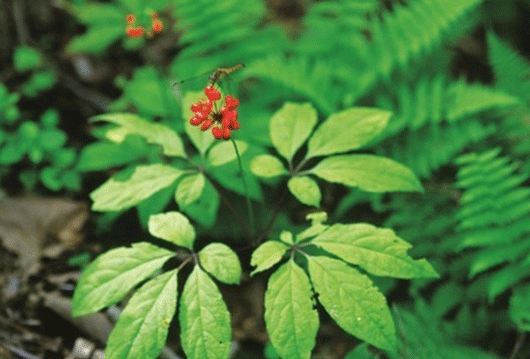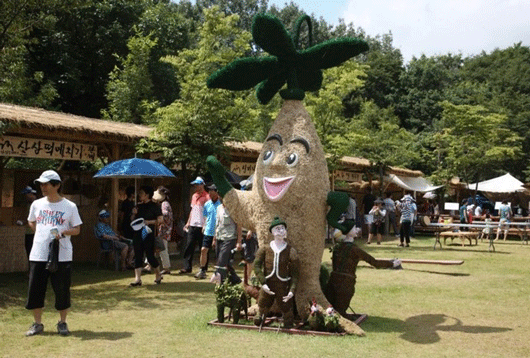Ambassadors, spouses invited to attend opening ceremony
Ever heard of a man named Byeon Gang-soe? Byeon has an insatiable carnal desire and an unmatched male potency. Byeon appears in Pansori (famed traditional Korean narrative song) where he is portrayed to have lived with Ongnyeo, a woman who had such a sex appeal that all the men who married her died shortly due to their overuse of energy to make her happy.

Legends have it that Byeon and Ongnyeo lived in Hamyang County which is famous for Sansam (mountain [wild] ginseng) and there are a number of monuments in memory of Byeon and Ongnyeo at their old house site in the county. Byeon, according to the stories, was never satisfied until he had had 10 women in succession or ten times if with the same woman.
How was it possible? The stories say that they ate a lot of Sansam (wild ginseng) as they lived in a village in the Jiri Mountain range where the ‘cure-all’ medicinal plant was found--more than in any other locality in Korea.
Sansam is believed in Korea to have many times the medicinal efficacy of regular ginseng and especially to increase the potency of men and the capacity of women.
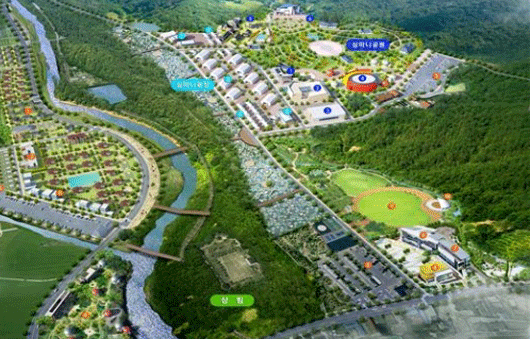
This is why the price of wild ginseng is very high, and even today a 100-year-old Sansam sells for tens of millions of Won while a six-year-old regular ginseng of the same size is available for mere several thousand Won a root at ordinary market.
The Hamyang County has been hosting the Sansam Festival every year for the past11 years--capitalizing on the cleanest environment in the famed Jiri Mountains (where wild ginseng grew and where Byeon and Ongnyeo lived) and the widely known natural surroundings best fit for the growth of the wild ginseng plus the incomparably high value of the wild ginseng. This year, County hosts the 12th Hamyang International Sansam Festival on July 30-Aug. 3, 2015 in a five-day run and in 2020 the County plans to host a large-scale wild ginseng expo.
The Festival is supported by the Ministry of Culture, Sports & Tourism, the Korea Forest Service, the Gyeongsangnam-do Province and the Seoul City.
The opening ceremony will be held at the Sangrim Park of the County on July 30, to which a number ambassadors and their spouses are invited as special guests of Mayor Im Chang-ho of the Hamyang County and Chairman Kim Yun-se of the Insanga Health Center in a one-night-two-day tour.
During their stay in Hamyang, the ambassadors and their spouses are also invited to visit the Insanga Bamboo famous for Bamboo Salt which is 200 times the price of regular salt.
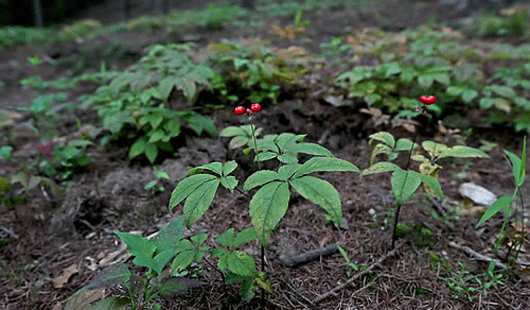
The Hamyang International Wild Ginseng Festival consists of 65 different interesting programs that will be held not only at the venue of the opening ceremony but also at the Children’s Park.
The programs are divided into four main categories, eg, exhibition, experiencing, sale and special events.
Among them is a treasure-hunt game named ‘Find the Gold Sansam’ at the Children’s Park with a good number of attractive prizes, including a gold bar of 30 Don (112 grams valued at approx. 6 million Won), 30 boxes of Sanyangsam (cultivated mountain ginseng), 300 wild ginseng plant pots and 100 Luck Bags.
There are 10 different theme pavilions, which include a Simmani Pavilion which features Simmani (professional wild ginseng hunter), about whom there are many interesting stories.
According to the Academy of Korean Studies, Simmani enter the intractable mountains difficult of access by ordinary people for discovering wild ginseng from Cheoseo (end of summer [August 23 this year]) to Ipdong (beginning of winter [November 8]) and before they do this they avoid many things to keep themselves clean so that they do not offend the Mountain God.
They stay away from eating meat and fish, climb the mountains in a group in an odd number, and offer food and drinks to the Mountain God in a rite praying for discover of wild ginseng and safe return home after the ginseng hunt. The Simmani also avoid attending funerals and meeting with the bereaved members of the deceased person’s family?to keep themselves clean from worldly things. They believe that only this way when they are in a state of pleasing the Mountain God would they be able to have the chance of locating the wild ginseng.
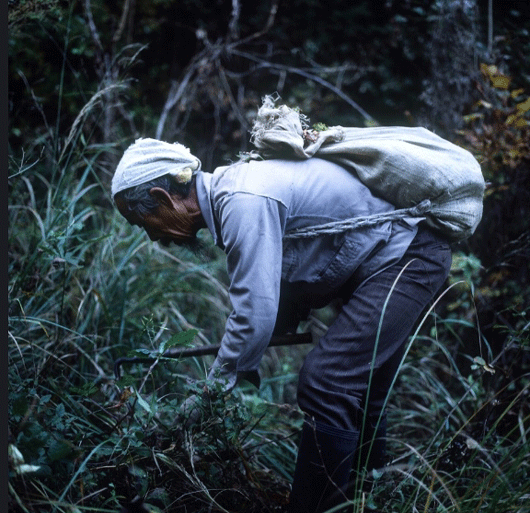
Genuine wild ginseng is found growing at a special spot deep in the intractable mountainous terrain denying access by man, where the humus soil is made with fallen leaves accumulated for hundreds of years and humidity is maintained at an optimal level despite the worst dry season.
Due to such particular surroundings, the wild ginseng is known to have a special medicinal efficacy good for many diseases?such as loss of energy, weak brain functions, diabetes, cancer, hypertension, diseases of the heart, and various other adult diseases.
Sansam is also known to be effective in reducing the ill effects of menopausal symptoms, mental stress, anemia, ageing of the eyes, metabolism, strengthening of the immunity system, controlling the growth of cancerous cells and lowering the sugar level of the blood. The Saponin content in Sansam is believed to keep the Cholesterol at an optimal level and help the creation of clean blood thus helping the prevention of hypertension.The Malton content in Sansam is known to be good in recovery from fatigue and prevention of the ageing of the body.

